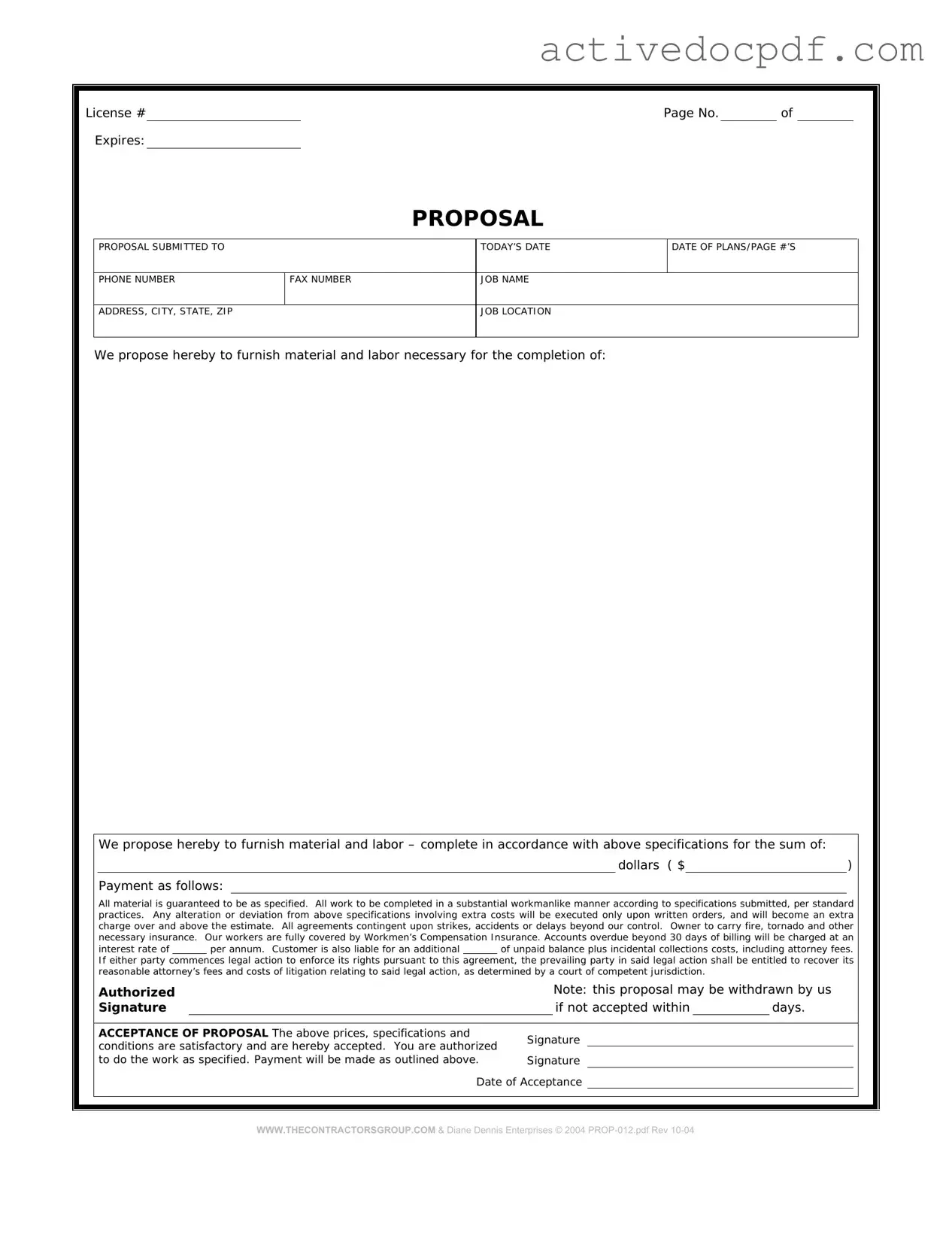A Construction Proposal Form is a document used by contractors to outline the details of a proposed construction project. It includes information such as project scope, timelines, costs, and materials. This form helps both the contractor and client to agree on the terms before work begins.
Using a Construction Proposal Form is crucial for several reasons:
-
It provides a clear understanding of project expectations.
-
It helps prevent misunderstandings between the contractor and the client.
-
It serves as a legal record of the agreed terms.
-
It can aid in securing financing or permits, if necessary.
The Construction Proposal Form generally includes the following information:
-
Project description and scope of work.
-
Estimated timeline for completion.
-
Detailed cost breakdown, including labor and materials.
-
Payment terms and conditions.
-
Any necessary permits or licenses.
To fill out the Construction Proposal Form, follow these steps:
-
Start with the project title and client information.
-
Clearly describe the scope of work.
-
Provide a timeline that outlines key milestones.
-
List all costs associated with the project.
-
Include payment terms and any additional notes.
Both the contractor and the client should sign the Construction Proposal Form. This ensures that both parties agree to the terms laid out in the document. Having both signatures creates a binding agreement that can be referenced if disputes arise later.
Yes, the Construction Proposal Form can be modified after submission, but both parties must agree to any changes. It is advisable to document any modifications in writing and have both parties sign the updated proposal to maintain clarity and legal standing.
What happens if the project costs exceed the proposal amount?
If project costs exceed the proposal amount, the contractor should communicate with the client immediately. Depending on the circumstances, a revised proposal may need to be submitted for approval. It is essential to maintain transparency to avoid disputes and ensure the project remains on track.
